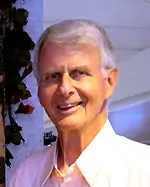 Tales of our Times
Tales of our Times
By JOHN BARTLIT
New Mexico Citizens
for Clean Air & Water
The Cerro Pelado Fire recently threatened nearby mountains, canyons, and their resident assets in Northern New Mexico.
Over 45,000 acres burned. For three straight weeks, wildland firefighters averaged two one-hour meetings a week in town, which gave town dwellers a close look at the ins and outs of wildland firefighting.
Wildland fires have much the look and feel of war zones, with one epic difference: Mother Nature is in charge. Though she can be harsh, nature is not a source of fake clues. Diversionary ploys are not in her tool kit. Everything is real.
Firefighters typically begin a town meeting with a report from the team’s weather modeler. They focus first on the weather conditions that make the most difference in the day’s (and night’s) work of firefighters. Wind and prospects for rain top the list. We learn: “Today was rough, with no moisture in sight. Winds were 20 to 30 from the southwest, with gusts to 50. The next two days look better—winds 15 to 20, with gusts to 30. These winds let the helicopters fly so we can attack the fire directly.”
The next speaker at a town meeting is often the team’s fire behavior analyst. Fire teams cannot get ahead of a wildland fire by making a muddle of the facts. With no pomp, town meetings serve as an ad hoc short course in fire science. Information flows, and locals begin to pick up a few basics of wildfire. The weekly prospects for knocking down a wildfire depend on a string of factors that affect the odds of success.
Fire science keeps adding know-how and charts that depict how gusty winds fan the flames and how far flying embers can fly. Other key factors include air temperatures, relative humidity, types of vegetation that may burn, moisture content of the fuels, terrain, and roads (good for travel and for firebreaks). Old fire scars and their history also have major effects on fire behavior. Fire teams gather all these data.
A wondrous tool for the work of fire teams is the daily fire map. A modern fire map shows land features, roads, legal jurisdictions, and the fire’s perimeter at the time. The perimeter also tells which parts of the fire’s edge are “contained” (stopped from advancing) (shown in black) and which parts are not contained (shown in red). Daily fire outlines are drawn by a computer using data from satellites, flights of drones, and infrared cameras. The daily map is a tidy means of setting work priorities and showing the diverse citizenry clear reasons for the choices that are made.
What stands out to me is the stark contrast between how fire teams come to a decision vs. how decisions appear in party politics. Fire teams weigh the pros and cons—which actions help the most, which ones don’t help, and why—that depend on weather prospects and the data on daily fire maps. Politics has evolved clumsier tools. Parties trade barbs on the airways about the pros and cons of party chiefs and their boosters. In the process, pros and cons of policy options take a back seat. A wildfire meeting may be grim, yet is more real, even inspiring, than most campaigns that come our way.
The scoop about firefighters’ know-how makes good reading on the Internet.
Start with a search on the topic “degree programs in wildland fire science.” A few minutes’ scan finds programs at some leading schools and online. Adventure sweeps in with a search on “a day as a wildland firefighter.” Read about tent cities built in two days for a thousand and more, hot meals morning and night for shift workers, and earnest fellowship at the day’s briefings to get the fire status and team assignments.
Firefighting is a hard slog whose skilled feats cannot be outsourced. To size up the field, each job opening may have a dozen to a hundred applicants.
The firefighters and the science preserved our community. All thanks to both.

